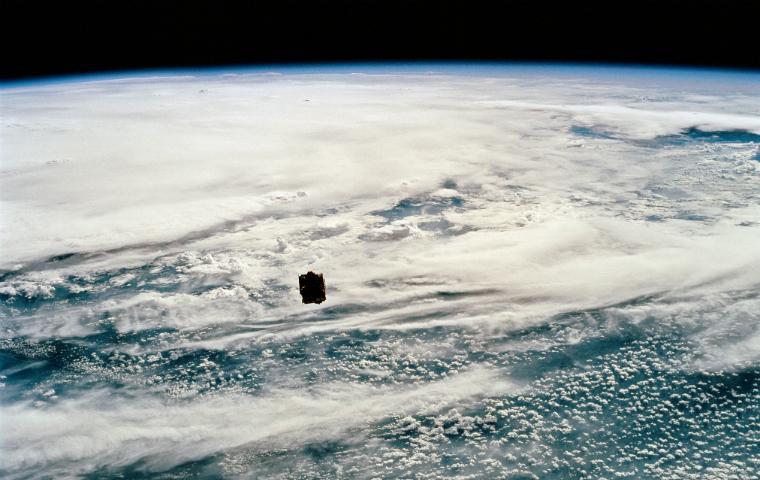
Now We Know: No Blue, No Green
The ocean and planet Earth need each of its inhabitants to be an active advocate on its behalf, one of the nation’s leading experts on the ocean told a full crowd at Santa Clara University’s de Saisset Museum Wednesday night.
The Miller Center for Social Entrepreneurship on March 2 presented an evening with Sylvia Earle, a marine biologist, National Geographic explorer-in-residence, and the first female chief scientist of the National Oceanic and Atmospheric Administration. She was joined by Autodesk environmental advocate and director of strategic initiatives, Jonathan Knowles.
In a discussion moderated by Miller Center’s executive director, Thane Kreiner, Earle focused on all the things that humanity now knows about the vital role of a healthy ocean, and the choices that are putting it in jeopardy.
“Without water, life that shapes the character of the planet could not exist,” she said. “No ocean, no life. No blue, no green.”
Right now, “we have a planet that works in our favor,” she said, with the ocean as its primary “life support system.”
“It’s only right about now that we’ve accumulated enough evidence, and the ability to share that evidence, that we are beginning to get it,” she said. “Humankind actually has the potential for taking decisions to secure an enduring place for ourselves within the natural ocean-dominated planet that makes everything we care about possible. “
According to Earle and Knowles, among the facts we know now that should compel us to behavioral changes are:
- Marine bacteria known as prochlorococcus are responsible for perhaps 20 percent of the photosynthetic production of oxygen. Acidification, coral reef destruction and other ocean catastrophes put them at risk.
- Populations of sharks, who are the “garbage collectors” of the ocean, are down to 10 percent of not-too-distant levels, due to obscene levels of killing for shark-fin soup and other human causes.
- Vowing to end unnecessary human consumption of seafood would help replenish ocean life. “Every tuna that you don’t eat is one that could be swimming out there,” said Earle.
- Growing farmed seafood is an alternative, but it must make sense. Growing shrimp, salmon and tuna doesn’t make sense, because they are either carnivores that require other animals to be raisedto feed them, or they take too long to become ready to eat. Tilapia, catfish and carp make more sense.
- If everyone agreed to give up plastic straws, it would make an immediate and important impact on ocean life.
- The ocean is “earth’s great thermo-regulator,” as Earle put it, and must be preserved as such.
The evening also featured a showing of the gripping documentary Racing Extinction, which uses undercover video and photography to expose the vast scope of human-caused extinction of species of animals, and the risk posed by such callousness to human life itself.
“There’s compelling evidence everywhere now that humans, now 7 billion of us, armed with technologies, have the capacity to alter the nature of nature on a scale that is unprecedented in the history of the planet,” said Earle.
To solve the issues, added Knowles, “everyone needs to become a scientist,” becoming aware, thinking about the problems, and using their field of study and skills to contribute to innovations.
“No one can do everything,” said Earle. “But everyone can do something.”
Photo courtesy of NASA